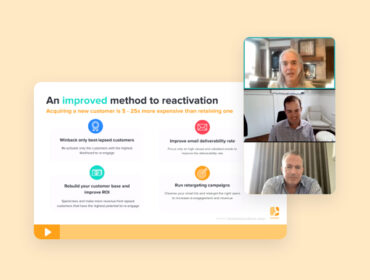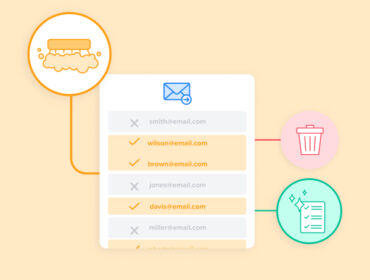Email is not dead: Why you need to seriously consider pivoting to first-party data
In a recent podcast with Jason Oates, chief business officer at LiveIntent, ClickBank’s business development manager, Kyle Kostechka, points out that “[Email] is like Keith Richards at this point: everyone keeps thinking it’s dying, but it’s just still here kicking, just as viable as it was 10 years ago.”
“Email’s like oxygen,” Oates adds in reply to Kostechka’s cheeky analogy. “It’s so important that you don’t even realize how important it is.”
For many consumers, email is a portal to the rest of the web — offering a customized inbox of opt-in content from publishers, brands, coworkers, family, and friends. In fact, people spend five hours a day on email and call it their preferred channel for brand communications.
Now that the third-party cookie is going away, email has also emerged as a lifeline for publishers and advertisers, serving as the foundation for their first-party data strategies and performance marketing efforts.
In fact, that’s why Oates and Kostechka caught up recently: to discuss why email continues to thrive and how marketers can — and must — start gathering and activating that first-party data right now.
Here’s what they had to say.
Harness the largest human identifier out there
Once third-party cookies disappear, marketers will be left with a huge identity problem. This means they’ll have to find a new way to identify, track, and target customers across the web.
That’s where email comes in.
“Email is the largest identifier ever created by humans by far, and it can be used in adtech, martech, and madtech,” says Oates. “Having that asset and building up that first-party data is really helpful because you can start building a people graph of all of your customers […] Now you’ve got a pool of identifiers that you can actually leverage in different media.”
Even on Facebook, email is at the center of identity because people use their email address to log into the social media site.
“So email is not going anywhere,” Oates says. “It’s what makes social- and people-based platforms so powerful — they have email as an identifier.”
Own and control your customer data
Over on Facebook, reach is dwindling and cost-per-acquisition (CPA) is rising, pricing many businesses out of the market. Still, even those that can pay to play don’t actually have ownership or control of the audiences they cultivate there. Because Facebook locks its data inside a walled garden.
“Oftentimes, we’re giving [data] out to platforms or we’re really trusting their algorithms and their tracking,” says Kostechka. “Realistically, our customers still remain behind a veil, a veil that somebody else owns. And because you don’t own that, you don’t own your ability to pivot. You don’t own what’s going to happen in your future.”
First-party data like the email address, on the other hand, gives businesses the control that they need.
“You can actually see, ‘What is the type of content people are looking at? How relevant is that to what we want to serve them? What environment are they in?'” Oates says. “Part of the reason for us to exist is to give publishers a way of competing against Facebook, Google, and Amazon.”
From there, marketers can use that first-party data to build advertising into their newsletters and even target people outside of email and across the open web.
Expand beyond just CPA goals
With the power of email and first-party data, marketers can move beyond just hitting CPA goals and start optimizing for other performance metrics like cost-per-sale, return on ad spend, and customer lifetime value.
“Going deep into performance allowed us to start scaling companies,” Oates says. “[We] find someone overly dependent on Facebook. They’re scared, they’re not diversified, and they only have a few people in their operation. We can have a big impact.”
But brands have to start preparing now because, even though Google pushed off third-party cookie deprecation to 2023, building their first-party data strategy will take time.
“Getting that data infrastructure in place so you can bring it in, store it, organize it, and send it back out [can take] a year to 18 months,” says Kostechka. “So you really need to be thinking about it right now and taking action.”


